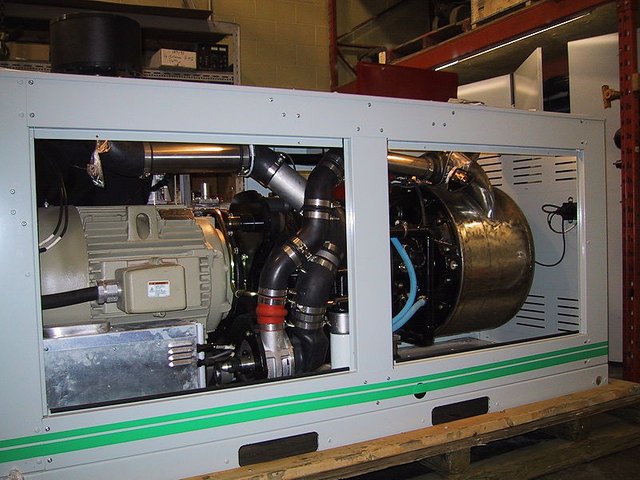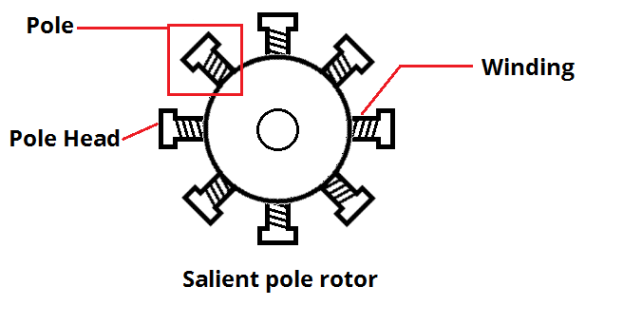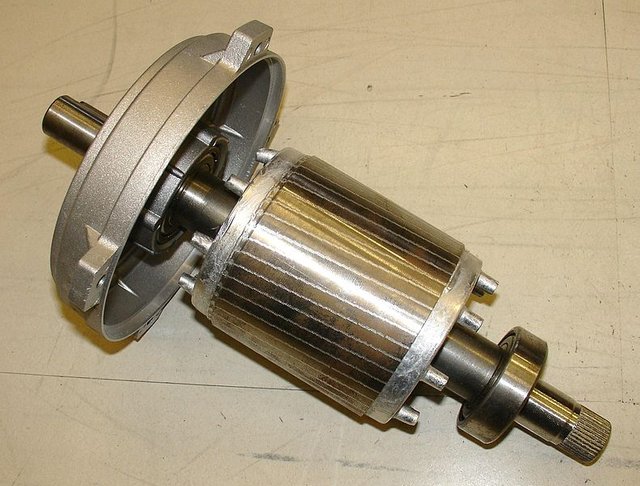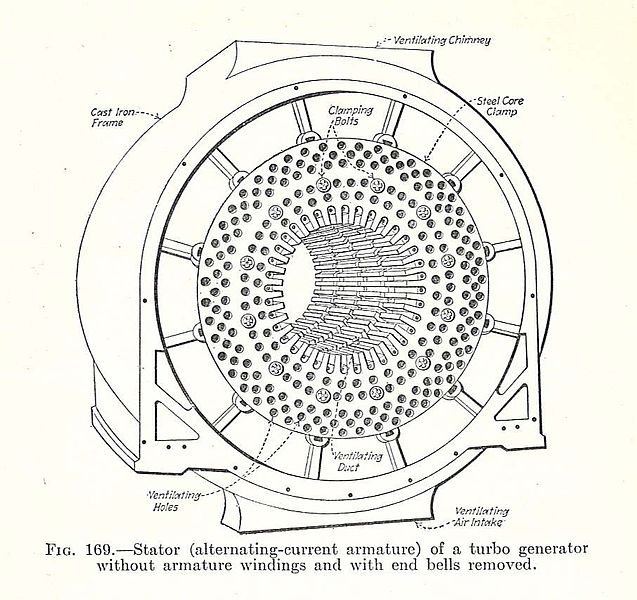
Introduction
This principle states that whenever a magnetic flux linking a circuit changes, an electromotive force is always induced in the circuit and the magnitude of the induced electromotive force is equal to the rate of change of the flux linkages. In simple terms, this principle states that if you place a conductor in a varying magnetic field, electricity is induced in that conductor and this induced electricity depends on the rate of varying the magnetic field.
Principle of operation
Fleming’s right hand rule states that the thumb represents the direction of the movement of the conductor, fore-finger represents direction of the generated magnetic field, then the middle finger represents direction of the induced current when the thumb, fore finger and the middle finger of the right hand are placed perpendicular to each other.
and the frequency is given by
F = PN/120 Hertz
where N is the rotor speed in rpm
and P is the number of poles
Details of construction
The rotor consists of a coil of conductor usually copper, wound around an iron core. Current through the conductor coil called excitation current produces a magnetic field around the iron core. The strength of the excitation current determines the strength of the magnetic field generated. The excitation current is a direct current and it is generated by a direct current generator called exciter. it is supplied to the conductor coil by a set of brushes and slip rings. Because the magnetic field produced are alternately North and South, they induce an alternating electromotive force in the stator conductors. The rotor shaft is connected to, and rotated by prime movers of rotating machines in power generating stations.
Two types of rotors are used in alternators, these are the salient-pole type and smooth-cylindrical type.

Salient-pole rotor Wikimedia commons-public domain license
The salient-pole type is used in low and medium speed alternators ranging from 125 rpm to 500 rpm. It has a large number of projecting poles mounted on a heavy magnetic wheel of cast iron or a steel of good magnetic quality. Such generators that uses salient-pole are characterised by their large diameters and short axial lengths. The poles are laminated to minimize heating due to eddy currents. Salient-pole rotors usually need damper windings.
The damper winding is useful in preventing momentary speed fluctuations in generators and are needed to provide the starting torque. Let me state here that under normal running conditions, the damper winding does not carry any current because the rotor runs at synchronous speed. The damper winding also tends to maintain balanced three phase voltage under unbalanced load conditions.

smooth-cylindrical rotor Wikimedia commons-public domain license
The smooth-cylindrical type is used for steam turbine-driven alternators, which runs at very high speeds ranging from 1500 rpm to 3600 rpm. The rotor consists of a smooth solid steel cylinder, having a number of slots milled out at intervals along the outer periphery and parallel to the shaft for accommodation of the field coils. The smooth-cylindrical rotors are designed mostly for 2-pole or 4-pole alternators because of their very high speeds. It should be noted that they do not have projecting poles. They are characterised by their small diameter and long axial length. The smooth-cylindrical rotors have quieter-operation and less winding losses.
Now, let's talk about the stator;

alternator stator Wikimedia commons-public domain license
The stator consists of the stator frame and the stator core.
The stator frame is used for holding the armature windings in position. Low-speed large diameter alternators generally have frames which are cast as sections because of the ease of manufacture. There's need for proper ventilation and this is maintained with the help of holes cast in the frame itself.
The stator core is supported by the stator frame and it is built up of laminations of special magnetic iron or steel alloy insulated from each other with varnish or paper. To minimize loss due to eddy currents, the core is laminated. The slot for holding the armature conductors lie along the inner periphery of the core.
The armature winding is the current carrying winding in which the electromotive force is induced. In alternators the armature windings are open that is there's no closed path for the armature currents in winding itself. The two types of armature windings used in three phase alternators are the single layer winding and the double layer winding.
Conclusion
In electricity generation, the synchronous electrical generator converts mechanical energy to electrical energy for residential, commercial and industrial purposes. The source of mechanical energy may vary from an internal combustion engine to the prime mover of a hydraulic turbine. The conditions necessary to induce a voltage in a conductor are the magnetic field, the conductor and the relative motion between the two. As the rotor rotates, magnetic field is generated. This magnetic field cuts the stator armature and thus a voltage is induced in it. Rotation speed of the rotor influences the induced voltage magnitude and frequency. If an electrical load is connected to the loop terminals, a current will be established in the circuit. The current generated by an electrical generator is alternating current.
References
If you write STEM (Science, Technology, Engineering, and Mathematics) related posts, consider joining #steemSTEM on steemit chat or discord here. If you are from Nigeria, you may want to include the #stemng tag in your post. You can visit this blog by @stemng for more details. 
I'm a proud member of @promo-mentors where you get mentored and guided on how to make quality posts on steemit amongst other benefits. Do join us on discord. We anticipate your arrival.
